Introduction
The Elder Futhark is an ancient runic writing system developed and used by Germanic tribes who spoke Northwest Germanic dialects in the 2nd to 8th centuries. It is the oldest form of the runic “alphabets” - having later been simplified into the Younger Futhark by Scandinavians, and expanded by the Anglo-Saxons and Frisians into the Anglo-Saxon Futhorc. To begin writing your name, or any simple phrase, you must first decide which of these rune systems to use. While on this site I will be focusing on using the Elder Futhark, below you can see examples of the Anglo-Saxon and various Younger runic systems.
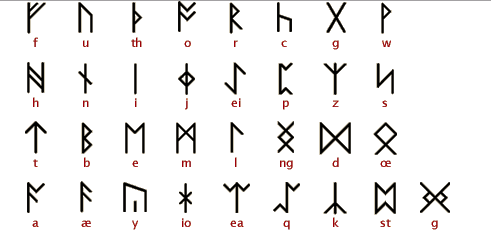
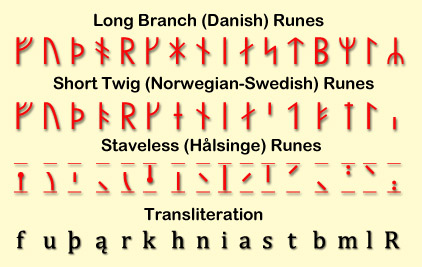
Understanding the Elder Futhark
In order to write anything in any system, you should first have a basic understanding of the system you are using. In English, we use the Latin alphabet; to write in runic, we will be using the Elder Futhark. The rune systems, though often commonly referred to as “alphabets” are in fact not alphabets in the traditional sense at all. Our Latin alphabet is so named due to the names of its initial letters - “alpha” and “beta”. The Futhark is named in a similar way, with the sounds of the first six characters making up the name. “F” “U” - pronounced oo - “TH” “A” - pronounced ah - “R” “K”.
Another difference you will note is that the Futhark is divided into three groups, called Aetts or Aettir. Each group, lit. “family," has eight runes. It is thought that this sorting can be attributed to two things: practicality and religion. Breaking up the runes into three groups makes them easier to memorize, but each Aett is also under the domain of a certain Norse deity, representing a certain “theme” so to speak. The first Aett belongs to Frey, or his sister Freyja, and involves the creation of all things. The second Aett belongs to Heimdall, called Hagal’s Aett, and involves disruptive forces and change - juxtaposed to the previous Aett. Finally, the third Aett is called Teiwaz’s Aett, belonging to Tyr and representing the gods and divinity. Below, you can see the Elder Futhark in its proper order - broken into the three Aetts running top to bottom and left to right - as well as in Latin or "alphabetical" order. Also shown are the Latin letter equivalents of the runes and even some traditional meanings.
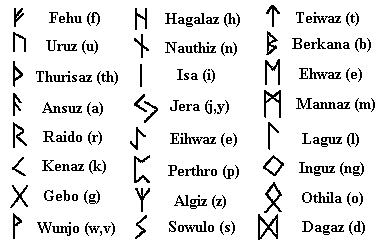
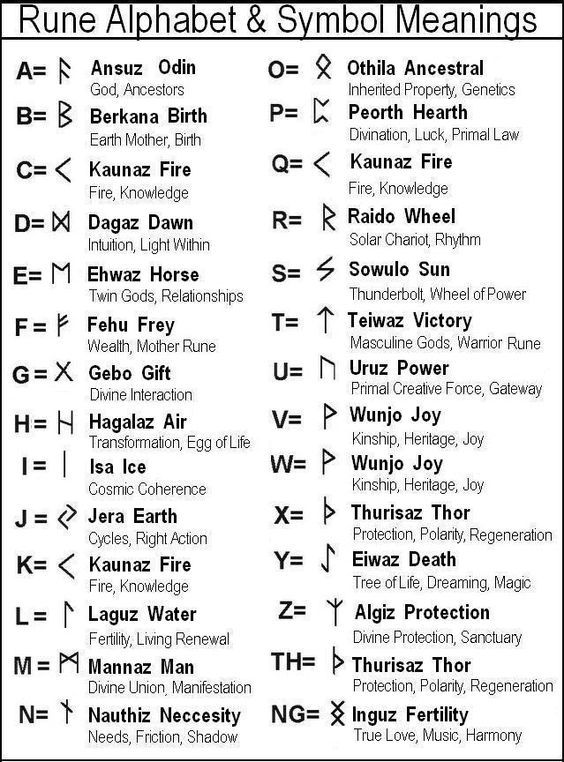
While each rune “represents” an English letter, they aren’t all pronounced the way you may think and should therefore be referred to by their names. We will look into this discrepancy in the next section.
Something interesting that I’d like to note, and vital if you wish to further study the runes, is that much like we have the “Alphabet Song” in English, the Ancient Norse had a mnemonic method of remembering their characters - the Rune Poems. While no such poem exists for the Elder Futhark, the three remaining poems detail the names and meanings of the other rune systems, as well as their order in the Aetts. The Younger Futhark’s sixteen runes are the topic of the Icelandic Rune Poem and the Norwegian Rune Poem, with the Anglo-Saxon Rune Poem describing that system’s twenty-six runic characters. Not only did these poems allow easier memorization of the runes and their meanings, but also of myths and cultural information as many of the stanzas refer to deities. The only downside of these poems is that they do not help English speakers very much, as when translated they no longer rhyme. Click here to jump to links for further reading.
Determining Your Method
Once you’ve chosen your runes, and have a basic understanding of them, you must make another key decision - will your text be transliterated or phonetic? Let’s break this down. Transliterated would simply mean replacing each letter of your name or phrase with the corresponding runic “letter.” However, writing phonetically would mean replacing each letter of your name or phrase with the correct sounding rune. Transliteration is quite simple, making the process more like using a cipher than writing in a different language. Phonetic writing can be a bit trickier. Below is a helpful chart for understanding the sounds of each rune, should you wish to write phonetically.
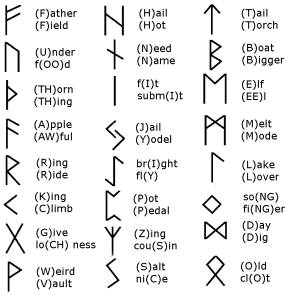
Here’s an example:
If I wanted to write the word “bright” through simple transliteration, I would write it like this:
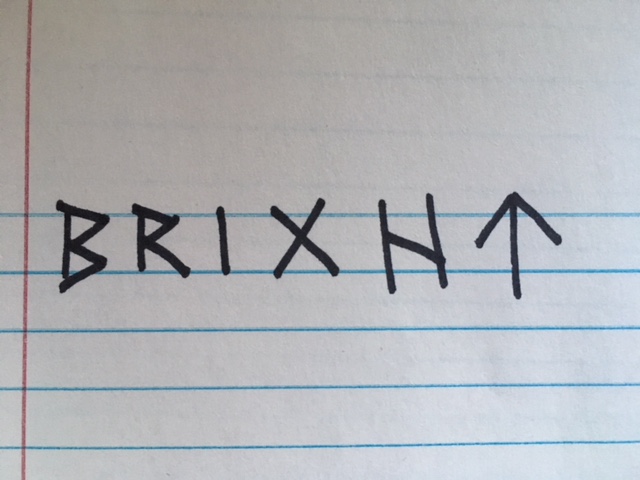
However, this would be pronounced with a short I as it “fit," and the G would not be silent and instead sound as it does in “give." It’d sound more like Brigit.
If I were to write this same word phonetically, I would write it like this:
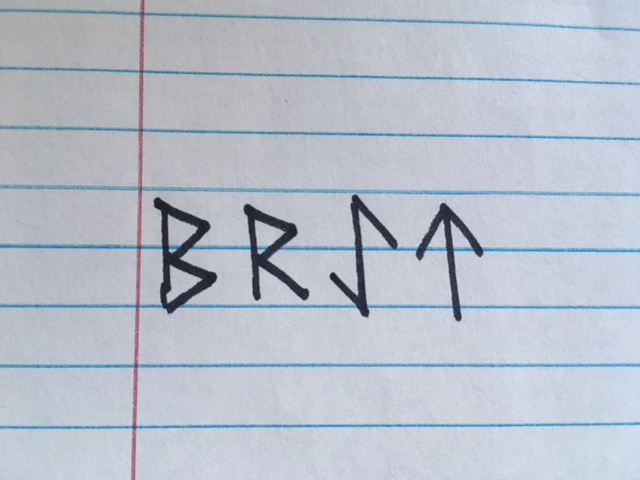
As you can see, I left out the GH altogether. This sounds like it does in English.
Putting It All Together
I’m sure you’ve read enough background and specifics by now, so hopefully you aren't asleep. Now we get to the part you came for: writing in runes! At this point, you should get the general idea. To transliterate, take the letters of your name or phrase and match them to the runic characters following the charts above. It’s that simple.
Here’s my name: Alona
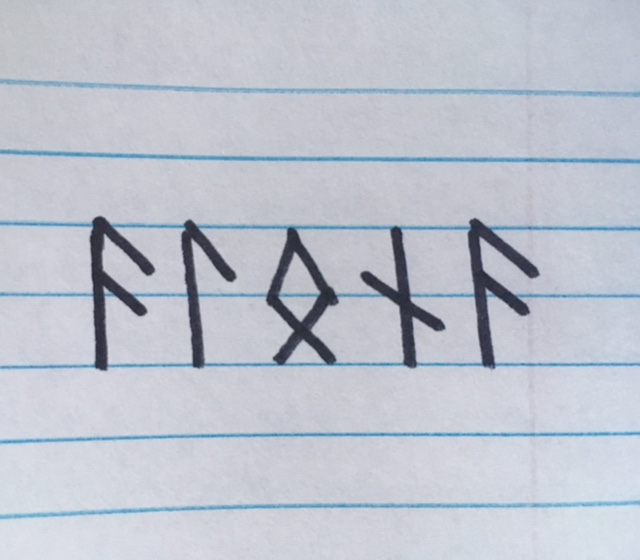
If you’re feeling ambitious, try writing phonetically! Remember, to write phonetically, refer to the above chart and match sounds.
Again, here’s mine:
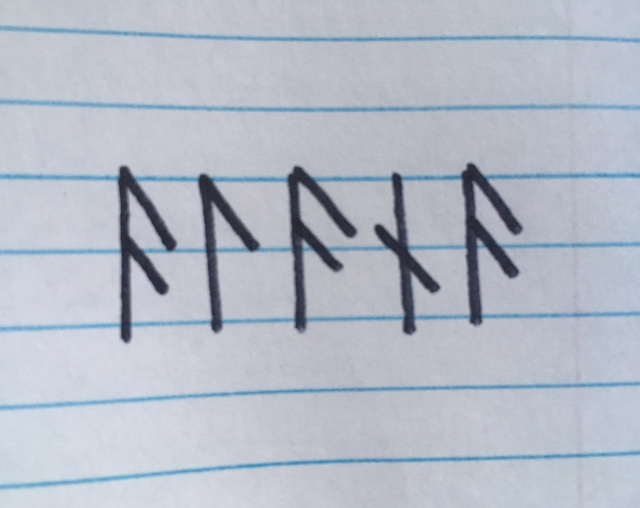
Bindrunes
For a little extra fun, and for stylistic purposes, you can make your text into a bindrune. Bindrunes are what you get when you take two or more runes and combine them into one symbol. These work best with a single word or name, though you can try a short phrase if you want. However, it is quite common for bindrunes to not spell anything at all when taken apart. Instead the runes are chosen for their meanings, such as prosperity or luck, and used as charms.
Bindrunes are really creative, meaning so long as you keep the shapes of the runes you need, the final design is up to you!
Here are some examples of my name as a bindrune:
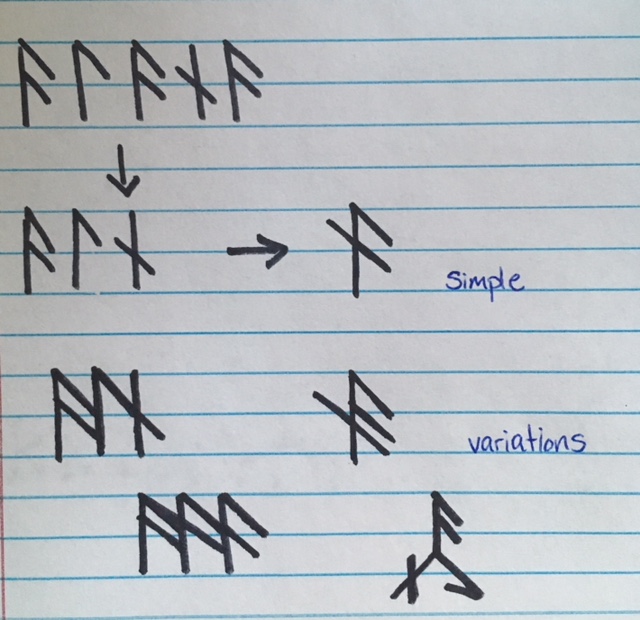
Further Reading
I hope you enjoyed learning to write in runes! If you want to do some more reading on the topic, check out these links:
Anglo-Saxon Rune Poem
Rune Poems
PBS
History on the NET
History of the Runes
Omniglot
Ancient Scripts
The Elder Futhark
The Elder Futhark: An Instructive Guide
Or check out my other site to learn about the nine worlds of Yggdrasil and all things Norse!
The Nine Realms
If you have any questions or comments, feel free to contact me at alonahazen @ yahoo .com





